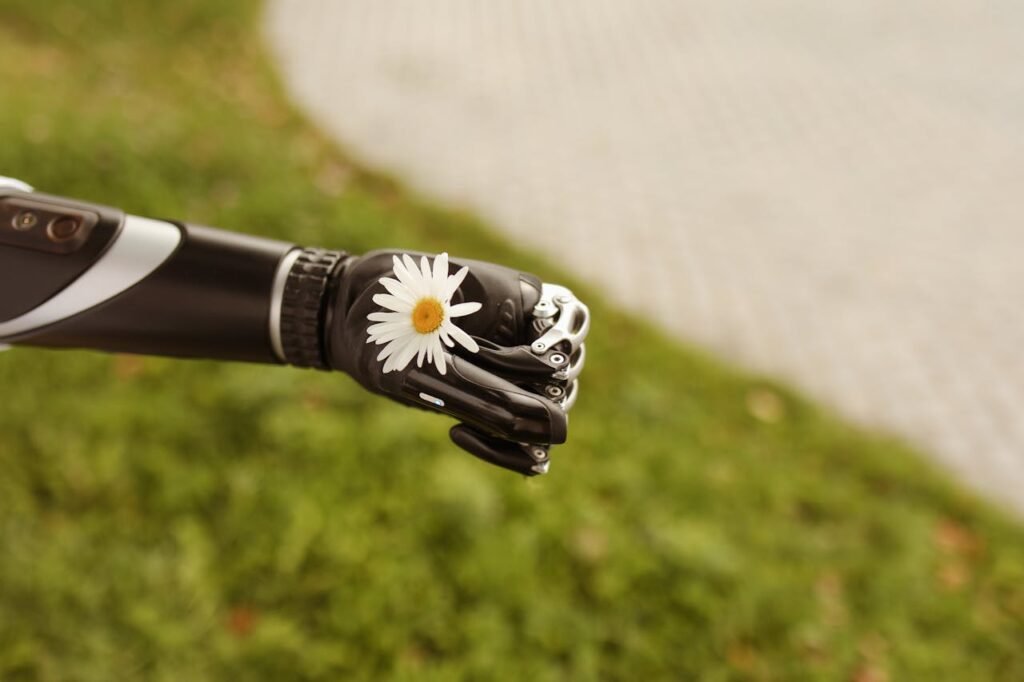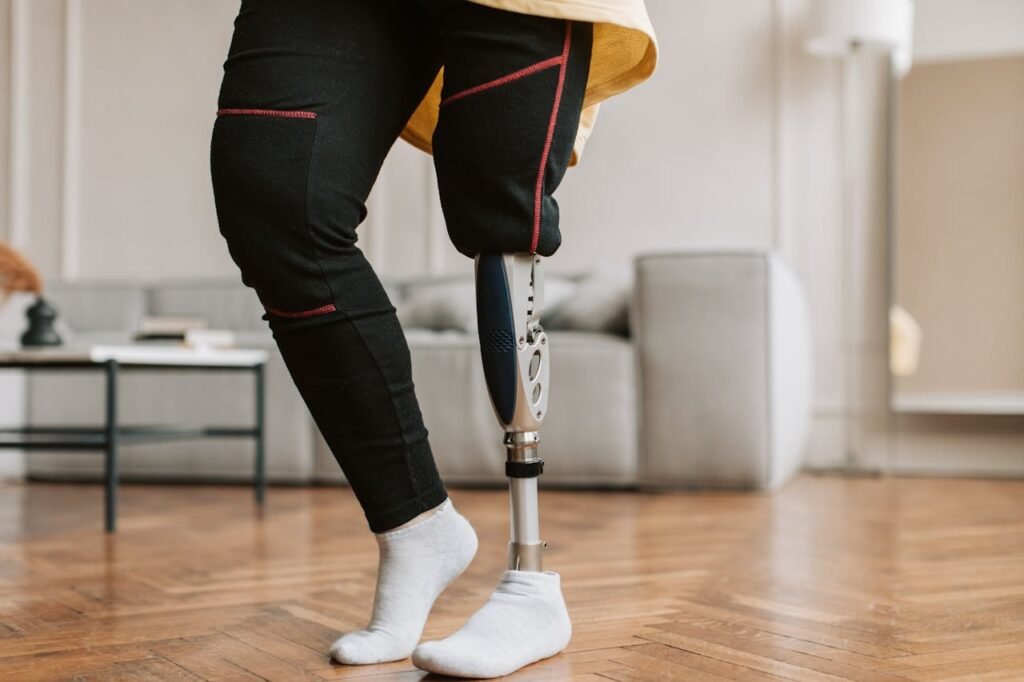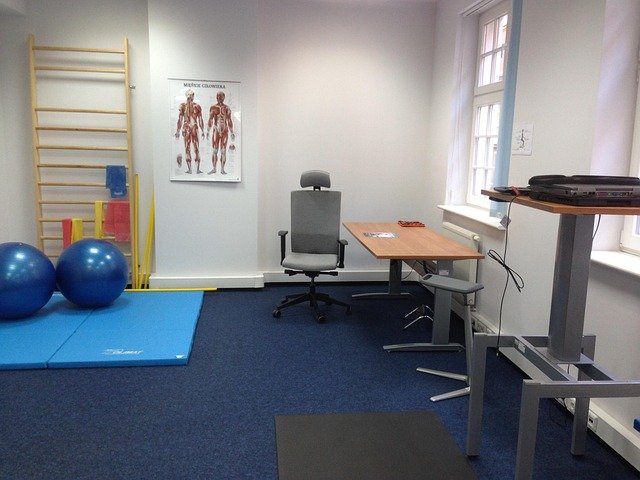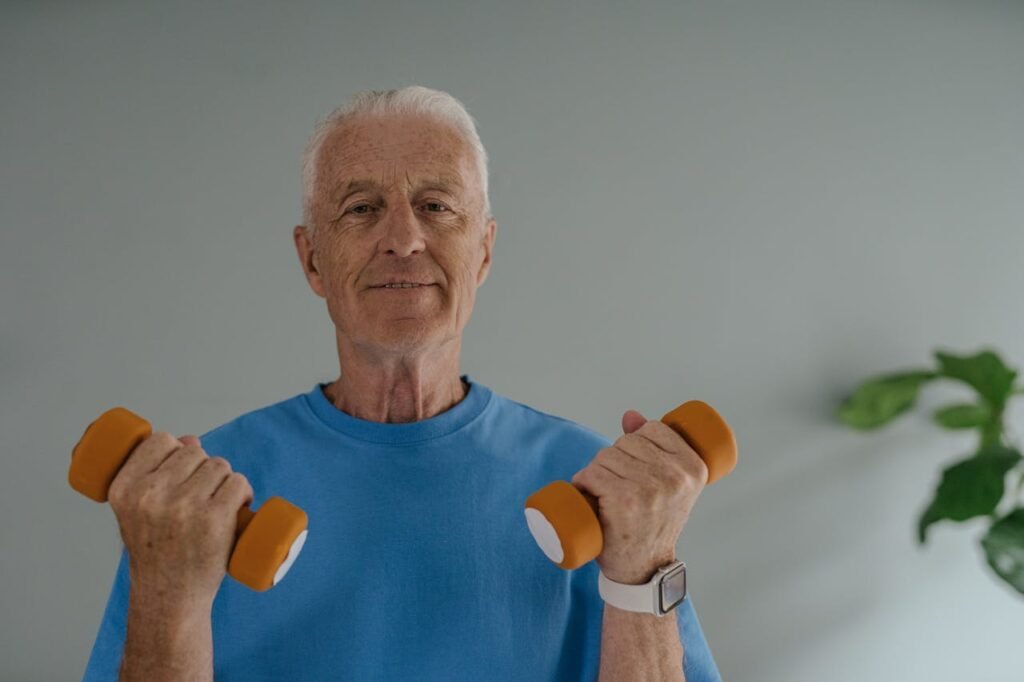Staying active is one of the best gifts we can give ourselves, no matter our age or ability. For seniors, especially those using prosthetic limbs, exercise is not just about fitness—it’s about freedom, balance, and joy. A healthy heart gives you the strength to do more of what you love. But as we age, our bodies need gentler care. That’s where low-impact cardio comes in.
Low-impact cardio is exercise that’s kind to your joints yet powerful for your heart. It keeps the blood flowing, the mind alert, and the spirit light. And for seniors using prosthetics, it’s a safe and smart way to stay fit, build stamina, and boost confidence every single day.
In this guide, we’ll explore how seniors using prosthetic limbs can enjoy heart-healthy cardio safely, comfortably, and joyfully. You’ll learn what kinds of exercises work best, how to get started, and how to make movement a fun, lasting part of life again.
Why Heart Health Matters More Than Ever

Our heart is a quiet hero. It beats tirelessly from the moment we are born, carrying oxygen and life to every cell in our body. As we grow older, keeping it strong becomes one of the most important things we can do.
But for many seniors, activity levels drop with age. Add in the challenges of limb loss or mobility limitations, and it can feel easier to stay still than to move. Yet, inactivity is one of the biggest risks to heart health. The good news? Even gentle, low-impact exercise can make a big difference.
A healthy heart helps with:
- Better blood flow
- Stronger muscles and joints
- Improved energy levels
- Sharper memory and focus
- A more balanced mood
For seniors using prosthetics, staying active doesn’t just protect the heart—it enhances every part of life. You move more confidently. You feel more independent. And every small step builds a sense of pride and strength.
Understanding Low-Impact Cardio
Low-impact cardio is all about movement that keeps your heart rate up without putting too much stress on your body. Unlike high-impact workouts that involve jumping or heavy pounding on joints, low-impact cardio focuses on smooth, steady motions.
It’s the kind of exercise that feels gentle but works wonders. Walking, swimming, cycling, seated aerobics, and gentle dancing are all great examples. These activities can be done safely even with a prosthetic limb, and they help build endurance without overstraining muscles or joints.
The best part? You don’t need fancy equipment or a gym membership. All you need is a bit of space, your prosthesis fitted properly, and the will to begin.
The Unique Needs of Seniors Using Prosthetics
Every senior has a different story. Some may have used prosthetics for years; others might be new to them. The journey is personal, but the goal is shared—to live freely, without fear or pain.
When using a prosthesis, certain things must be kept in mind before starting any exercise plan:
- Comfort comes first. Always ensure your prosthetic limb fits well and doesn’t cause rubbing or pain.
- Balance and stability. Start slowly, using support if needed. Over time, your body learns to move naturally with the prosthesis.
- Gradual progress. Begin with short sessions and gentle movements. As confidence builds, you can increase time and intensity.
- Doctor’s guidance. A medical or rehabilitation professional can guide you on safe movements and any limitations specific to your health.
Low-impact cardio allows seniors with prosthetics to strengthen both their body and confidence step by step. You don’t have to move fast—you just have to keep moving.
The Benefits of Low-Impact Cardio for Seniors with Prosthetics
1. Strengthens the Heart
Your heart is a muscle—it needs movement to stay strong. Gentle cardio increases blood flow and oxygen delivery, helping lower blood pressure, improve circulation, and reduce the risk of heart disease.
2. Improves Balance and Coordination
Using a prosthesis changes how your body distributes weight. Low-impact exercises like walking or gentle cycling train your muscles to adapt, improving stability and balance. Over time, daily movements feel smoother and more natural.
3. Boosts Mood and Confidence
Exercise releases endorphins—your body’s natural “feel-good” hormones. For seniors who may sometimes feel isolated or frustrated, regular movement lifts the spirit. Each workout becomes a reminder that your body is capable and strong.
4. Increases Mobility and Independence
The more you move, the easier it becomes to move. Low-impact cardio helps maintain joint flexibility and muscle tone, making it easier to perform daily tasks—whether it’s climbing stairs, reaching for items, or enjoying an evening walk.
5. Supports Weight Management
Maintaining a healthy weight eases strain on the heart, joints, and prosthetic socket. Low-impact exercises burn calories without causing discomfort, helping keep your body light and your heart healthy.
6. Enhances Prosthetic Control
Consistent cardio strengthens residual limb muscles and improves coordination. This makes prosthetic control smoother and more intuitive, helping you move more naturally and comfortably.
Getting Started Safely
Before beginning any new exercise routine, especially if you’re a senior using a prosthesis, take a few steps to prepare your body and mind for success.
1. Consult Your Healthcare Team
Speak to your doctor, physiotherapist, or prosthetist before starting. They’ll help you design a plan that matches your abilities and ensure your prosthesis is properly aligned for exercise.
2. Start Slow, Stay Steady
The first week is all about getting used to the movement. Begin with just 5–10 minutes of gentle cardio, like walking indoors or light seated movement. Increase your time gradually as your stamina improves.
3. Choose Supportive Footwear
If your prosthesis requires a shoe, pick one that fits securely and has a cushioned sole. This reduces strain on your joints and gives better balance.
4. Warm Up and Cool Down
Never skip these steps. Warming up helps loosen muscles and joints, while cooling down prevents stiffness. Gentle arm swings, shoulder rolls, and slow stretches work well.
5. Listen to Your Body
Mild soreness after activity is normal, especially if you’re new to exercise. But stop immediately if you feel sharp pain, discomfort at the prosthetic socket, or dizziness.
6. Keep It Consistent
Consistency is key. Even 20 minutes a day, five days a week, can create powerful changes in heart health, energy, and confidence.
Best Low-Impact Cardio Exercises for Seniors Using Prosthetics
1. Walking
Walking is simple, natural, and one of the most effective forms of low-impact cardio. It strengthens your legs, heart, and lungs—all while being gentle on your joints.
Start by walking indoors or on smooth, even ground. If balance feels uncertain, use a cane or railing for support. Gradually increase your pace and duration as you feel more confident.
Aim for 15–30 minutes at a comfortable pace. Remember: every step is progress.
2. Stationary Cycling
Cycling, especially on a stationary bike, provides a smooth and steady workout for your heart and legs. It’s great for those who want to move without putting weight on their prosthesis.
Start at a low resistance and focus on even, controlled movements. If your prosthetic limb feels uncomfortable, adjust your seat height or pedal strap until it feels natural.
Cycling boosts circulation and builds endurance—perfect for keeping your heart strong without strain.
3. Swimming and Water Aerobics
Water is a wonderful equalizer. It supports your body weight, making movement easier and safer for prosthetic users. Swimming or water-based aerobics improve cardiovascular fitness, strengthen muscles, and relieve joint stress.
If you’re new to swimming with a prosthesis, talk to your prosthetist about waterproof options or protective covers. Some people prefer removing the prosthesis in the pool and focusing on balance and movement training.
4. Seated Cardio Exercises
For seniors who prefer to stay seated, chair-based cardio can be just as effective. You can perform arm circles, seated marches, or side bends while maintaining a steady rhythm.
The goal is to keep your heart rate up without leaving your seat. It’s ideal for days when standing for long periods feels tiring.
5. Tai Chi and Gentle Yoga
These ancient practices focus on slow, flowing movements that build strength, balance, and peace of mind. Tai Chi, often called “meditation in motion,” helps improve coordination and joint flexibility, while yoga promotes flexibility and mental calm.
Many moves can be adapted for prosthetic users—especially chair yoga or supported poses.
6. Dancing
Music has a way of lifting the heart. Light dancing—whether it’s swaying to your favorite tune at home or joining a senior dance group—can be a delightful way to get cardio without it feeling like a workout.
The rhythm improves coordination and balance, while the joy of movement keeps you coming back for more.
Tips for Motivation and Consistency
Starting a new routine is one thing—staying motivated is another. Here are a few ways to keep the spark alive:
- Set simple goals. Focus on progress, not perfection. “I’ll walk for 10 minutes today” is better than aiming for an hour right away.
- Track your progress. Keep a small notebook or app where you record your daily movement. Seeing progress builds pride.
- Find a partner. Exercising with a friend, family member, or group keeps you accountable and makes the experience fun.
- Celebrate milestones. Every week you stay consistent is worth celebrating—treat yourself kindly.
- Stay curious. Try different types of low-impact cardio until you find what brings you joy.
Building Endurance Safely
Start with Short Sessions
When beginning a cardio routine, especially with a prosthesis, it’s best to start small.
Even 5 to 10 minutes of gentle movement can begin to improve circulation and heart health.
Short sessions allow your body to adjust gradually, preventing fatigue and soreness.
Over time, as you gain confidence, increase your duration slowly—add five more minutes each week.
Your endurance will grow naturally without straining your heart or joints.
Learn to Pace Yourself
Many seniors push too hard in the beginning and tire out quickly.
The goal isn’t to move fast, but to move often.
Try to maintain a pace where you can talk comfortably without gasping for breath.
If you feel out of breath or dizzy, slow down or pause.
Remember, low-impact cardio is about consistency and comfort, not intensity.
Understand the Role of Rest
Rest days are just as important as exercise days.
They give your muscles time to recover and adapt.
A simple rhythm like “two days on, one day off” can work beautifully.
Use rest days to stretch, do deep breathing, or take a relaxed walk.
This balance helps you stay active long term without exhaustion.
Managing Heart Rate and Breathing
Know Your Ideal Heart Rate

Every person’s heart has a safe range for exercise.
For most seniors, the target heart rate is about 50–70% of their maximum.
You can roughly calculate it by subtracting your age from 220, then taking 50–70% of that number.
For example, if you are 70, your maximum heart rate is around 150 beats per minute.
So your target range would be between 75 and 105.
Stay within that zone for safe and effective workouts.
Learn to Control Your Breath
Breathing deeply and evenly helps your heart work more efficiently.
Try inhaling through your nose for two seconds and exhaling through your mouth for four.
This rhythm keeps oxygen flowing and prevents sudden spikes in heart rate.
Many seniors unconsciously hold their breath when moving.
Remind yourself to breathe naturally—it calms the mind and steadies the body.
Watch for Warning Signs
Listen closely to your body’s signals.
If you feel chest pain, unusual shortness of breath, or dizziness, stop right away.
Sit down, take deep breaths, and seek help if symptoms persist.
Exercise should energize you, not exhaust you.
Learning when to pause is a sign of strength, not weakness.
Adapting Exercises for Different Prosthetic Types
Below-Elbow Prosthetics
If you use a below-elbow prosthetic, focus on exercises that strengthen your shoulders and core.
These muscles help control the prosthesis with precision.
Light arm swings, water-based workouts, or using resistance bands can improve movement control.
Keep your wrist and shoulder joints flexible through regular stretching and mobility drills.
Below-Knee Prosthetics
For below-knee prosthesis users, balance and coordination training are key.
Walking, cycling, and swimming help strengthen your residual limb and improve alignment.
Always ensure your socket fits well before starting a session.
If you notice discomfort or uneven pressure, talk to your prosthetist before continuing.
Above-Knee Prosthetics
Above-knee prosthesis users benefit greatly from exercises that build hip and core stability.
Gentle seated marches, supported walking, or swimming improve endurance safely.
Focus on posture and slow, controlled steps rather than speed.
A stable core will make your gait smoother and reduce energy use.
Partial-Hand Prosthetics
Those using partial-hand prostheses can enjoy upper-body cardio like seated boxing or arm cycling.
These movements boost circulation, build grip strength, and train coordination.
Start with light resistance, and ensure your prosthetic hand’s grip is secure before every movement.
Emotional Wellness Through Movement
The Mind-Body Connection
Exercise is not just about physical strength—it deeply affects the mind.
For seniors using prosthetics, movement often restores a sense of identity and freedom.
It’s a way to reconnect with the body, rebuild trust, and rediscover joy.
Each step, each stretch, reminds you that you are capable and resilient.
This emotional strength fuels motivation to keep going, even on tough days.
Reducing Anxiety and Depression
Low-impact cardio helps release serotonin and dopamine—natural mood lifters.
Many seniors report sleeping better, feeling calmer, and worrying less after regular exercise.
Movement also distracts from negative thoughts.
Focusing on rhythm, breath, and balance brings mental peace.
The Power of Routine
Creating a routine gives structure and purpose to your day.
Even a simple plan—like walking every morning or cycling after lunch—keeps the mind active.
It turns exercise into a habit rather than a chore.
With time, it becomes something to look forward to, not something you have to do.
Simple Home-Based Cardio Routines
Morning Energizer Routine
Start your day with gentle seated movements.
Begin with shoulder rolls, then march your legs slowly while seated for one minute.
Add arm swings or light punches to raise your heart rate.
In five minutes, your body will feel awake and ready.
This quick start helps regulate blood flow and builds energy for the day ahead.
Midday Balance Routine
For those who use a leg prosthesis, balance exercises are essential.
Stand behind a chair for support and gently lift one foot for a few seconds, then switch.
Try shifting weight from one leg to another slowly.
Do this for 10 minutes every day—it strengthens your hips, knees, and confidence.
Evening Relaxation Routine
End your day with calm, rhythmic movements.
Sit comfortably and stretch your arms overhead, then breathe deeply.
Twist your torso gently side to side to relax your back muscles.
Finish with slow ankle circles and a few minutes of deep breathing.
This helps your body wind down and promotes restful sleep.
Making Exercise Social and Fun
Group Classes for Seniors

Joining a senior-friendly exercise group adds fun and accountability.
Many local community centers offer gentle fitness or aqua aerobics classes.
Exercising in a group builds friendship and motivation.
You share experiences, encourage one another, and celebrate small wins together.
Virtual Classes and Apps
Technology makes it easier than ever to stay active from home.
Video classes, fitness apps, or online senior communities provide guidance and company.
You can follow routines designed for prosthetic users and even track your progress.
It’s like having a personal trainer at home.
Family Involvement
Invite your family to join your fitness journey.
Walking with grandchildren or dancing with your partner can turn workouts into memories.
When exercise becomes a shared activity, it strengthens emotional bonds.
The joy of moving together multiplies the benefits for your heart and mind.
Overcoming Common Challenges
Dealing with Discomfort
Mild soreness is normal when you start exercising, but pain should never be ignored.
If your socket feels tight or causes rubbing, pause your workout and check the fit.
Use soft liners, and keep your skin clean and dry.
Proper hygiene prevents irritation and allows longer, more comfortable sessions.
Managing Energy Levels
Some seniors feel tired easily when adjusting to new activity.
Stay hydrated, eat light meals before workouts, and pace your sessions.
Short, frequent exercises often work better than one long session.
Energy builds over time, not overnight.
Staying Motivated During Setbacks
There may be days when you feel like skipping your workout.
That’s completely normal.
The key is to be kind to yourself and return the next day.
Remember, progress isn’t always linear—every effort counts.
Even a few minutes of gentle movement keeps your heart happy.
Advanced Cardio Modifications for Seniors Using Prosthetics
Building Intensity Gradually
Once your body becomes familiar with regular low-impact cardio, you may feel ready to increase your intensity slightly. This does not mean moving faster or pushing harder, but rather deepening the quality of your movements.
For example, if you enjoy walking, try including gentle inclines or different terrains like grass or sand to engage more muscles. If you prefer cycling, you can slowly increase resistance for a few minutes before returning to an easy pace.
The goal is to challenge your heart in a controlled, safe way. You can think of it as teaching your heart to adapt to new situations while protecting your joints and prosthetic limb from stress.
Always remember to increase only one element at a time—either duration, intensity, or frequency—never all at once. This allows your body to adjust smoothly, keeping your heart strong without feeling overwhelmed.
Incorporating Light Strength Work
Adding light strength exercises to your cardio routine can make a significant difference. Stronger muscles support your prosthesis better and reduce fatigue.
You don’t need heavy weights or complicated equipment. Simple resistance bands, small dumbbells, or even your body weight are enough. Movements like gentle leg lifts, wall push-ups, or seated arm raises can be woven into your daily routine.
Perform them right after cardio or on alternate days to avoid overexertion. Consistent light strength training also improves your metabolism and posture, helping you move more efficiently and confidently with your prosthesis.
Combining Balance and Cardio
Balance exercises can easily be turned into cardio activities. For example, performing side steps while holding onto a chair can quicken your heart rate without making you feel unsteady.
You can also practice slow, controlled standing marches, shifting your weight from one side to the other. These small, deliberate actions improve muscle coordination and strengthen the stabilizing muscles that keep your prosthetic limb aligned.
It’s perfectly fine to use a wall or railing for support at first. Over time, as your balance improves, you will notice that even everyday movements—like turning, reaching, or bending—feel smoother and more natural.
The Importance of Recovery and Care
Listening to Your Body
Recovery is an essential part of a healthy cardio routine. It’s during rest that your heart grows stronger and your muscles repair. Seniors using prosthetics should pay close attention to how their body feels after every session.
If you notice soreness or swelling around the prosthetic socket, it’s a sign that your body needs rest or an adjustment. Gentle stretching, massage, or applying a warm compress can help relieve tension and maintain flexibility.
Try to schedule at least one full rest day each week. Use that time to enjoy light activities like reading, meditating, or taking a peaceful walk outdoors. Recovery is not a break from progress—it’s what allows progress to happen safely.
Caring for Your Prosthesis After Exercise
After every workout, take a few minutes to clean and inspect your prosthesis. Sweat and moisture can accumulate inside the socket, so wiping it dry helps prevent skin irritation.
If your prosthesis has removable liners or covers, clean them as per your prosthetist’s advice. Check for any small cracks or loosened parts before your next session.
Keeping your prosthesis in good condition not only ensures comfort but also keeps you motivated to move every day. A well-maintained prosthesis feels like an extension of your body, not an obstacle.
Nutrition and Hydration
Exercise and recovery go hand in hand with good nutrition. Seniors often underestimate how much water and nutrients their bodies need. Staying hydrated before, during, and after exercise helps the heart pump efficiently and prevents fatigue.
Try to include foods rich in potassium, magnesium, and protein in your diet. Bananas, lentils, nuts, and fresh vegetables support muscle repair and keep energy levels stable.
Avoid exercising on an empty stomach; a light snack like fruit or yogurt can give you the gentle energy boost your body needs.
Monitoring Long-Term Heart Health
Regular Checkups and Monitoring
For seniors, regular heart checkups are vital. They help ensure your cardio routine is benefiting you without causing strain. Schedule periodic visits with your doctor to check blood pressure, cholesterol levels, and overall heart performance.
You can also use simple tools at home, like a blood pressure monitor or heart rate tracker. These devices allow you to see your progress in real time and adjust your workouts accordingly.
A strong heart is built through patience and awareness, not just effort. Monitoring keeps your journey safe, informed, and deeply personal.
Setting Long-Term Goals
Goals give direction to your fitness journey. They don’t need to be big or complicated. It could be as simple as walking 20 minutes without stopping, cycling for 30 minutes, or attending a dance session twice a week.
The most meaningful goals are those that make you feel proud of yourself. Write them down, celebrate each milestone, and remember that progress—no matter how small—is still progress.
With time, what once felt challenging will become routine. That’s the magic of consistency—it transforms effort into ease.
Celebrating Progress
Don’t forget to celebrate how far you’ve come. Many seniors using prosthetics underestimate their strength because they focus only on what they cannot do.
Take a moment to notice the improvements: steadier balance, better sleep, higher energy, or even a brighter mood. These are signs that your heart and body are thriving.
Reward yourself occasionally with something that brings joy—a peaceful trip, a favorite meal, or simply the satisfaction of moving freely again.
Real-Life Inspiration: Moving Beyond Limits
Rekha’s Story: Dancing Again at 65
Rekha lost her right hand in an accident when she was 58. For years, she believed her dancing days were over. But after being fitted with a lightweight bionic hand, she began exploring gentle dance-based cardio routines at home.
Starting with just ten minutes a day, she slowly rediscovered her rhythm. The movement improved her heart health, confidence, and spirit. Today, at 65, she teaches simple dance classes to other seniors, reminding them that joy lives in motion.
Her story shows that prosthetics don’t limit expression—they can restore it beautifully.
Harish’s Story: Walking Strong After 70
Harish, a retired engineer, received his below-knee prosthesis at the age of 70 after a road accident. At first, he feared falling and avoided long walks. His doctor suggested starting with short, low-impact cardio sessions at home.
With patience and support from his physiotherapist, Harish built his stamina slowly. Within months, he was walking two kilometers daily without discomfort. His blood pressure improved, his sleep deepened, and he felt younger and stronger than before.
Harish now calls his daily walks his “morning medicine.”
The Joy of Shared Movement
These stories are not exceptions—they are proof that movement heals, empowers, and connects us. Each step, stretch, or pedal stroke is a declaration of resilience.
Whether it’s dancing, swimming, or simply walking in your garden, the important thing is to keep moving. Movement brings meaning to life, especially when done with care, patience, and pride.
Emotional Resilience and the Will to Move
The Mental Shift

One of the biggest challenges seniors with prosthetics face isn’t physical—it’s mental. The fear of falling, the memory of pain, or self-consciousness about appearance can hold people back.
But once movement becomes a part of daily life, these fears start to fade. Every completed workout builds confidence and redefines what is possible. The mind learns that the body, even with its changes, remains capable of great things.
The heart thrives when the mind is hopeful. Positivity is not just a mindset—it’s medicine for the spirit.
Building a Support System
Having people who encourage you can make all the difference. Support doesn’t only come from family; it can come from other prosthetic users, online groups, or fitness instructors who understand your journey.
Sharing your experiences makes you feel less alone. It also allows you to inspire others who are just beginning their path toward recovery and movement.
Together, strength multiplies.
Turning Exercise into Self-Care
Instead of viewing cardio as a task, see it as a gift you give yourself every day. It’s a quiet moment to honor your body, to thank your heart for its tireless work, and to appreciate how far you’ve come.
Even on days when you move slowly, remember that showing up is victory enough. Consistency, not speed, is what keeps your heart healthy and your life full.
Bringing It All Together: A New Chapter of Movement
Redefining Possibility
Heart-healthy, low-impact cardio is not just about fitness—it’s about freedom. For seniors using prosthetics, it’s a way to reclaim independence and joy. It’s about replacing hesitation with confidence and stillness with graceful movement.
Each exercise, no matter how small, sends a message to your body: “I’m alive, and I’m capable.”
That belief is powerful enough to transform not just your health, but your entire outlook on life.
The Role of Innovation
At RoboBionics, we believe technology should serve humanity with compassion and purpose. Our bionic and mechanical prosthetics are designed to bring comfort, precision, and accessibility to those who deserve more than just function—they deserve freedom.
With our Sense of Touch™ technology and user-centered design, we aim to make every step, grip, and movement feel natural and empowering. Our goal is to help you live actively and confidently, every single day.
A Heart That Keeps Giving
Your heart is your lifelong companion. The more love and care you give it through gentle movement, the stronger it becomes. It rewards you with energy, calm, and the courage to keep exploring life’s possibilities.
So, whether you are walking with your prosthetic for the first time or dancing after years of hesitation, know that every heartbeat celebrates your journey.
Take that first step today—slowly, steadily, with kindness to yourself.
Your heart will thank you for it in ways words cannot describe.
Take the Next Step
If you or someone you love is ready to rediscover movement and confidence, RoboBionics is here to help. Our team specializes in personalized prosthetic solutions that make active living safe, comfortable, and joyful.
You can schedule a free demo at https://www.robobionics.in/bookdemo/.
Let’s build a future where every step, every heartbeat, and every smile tells a story of strength and independence.



